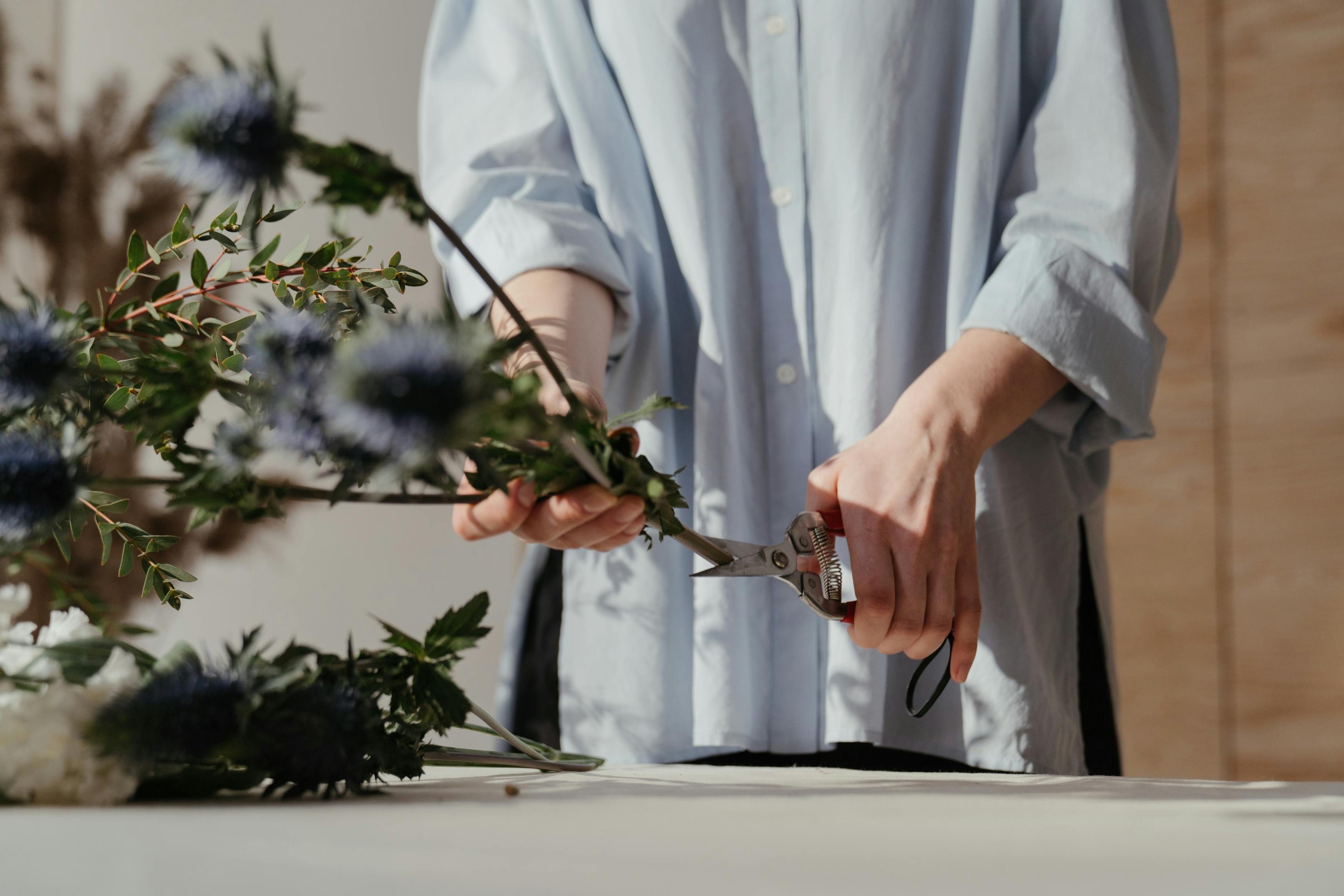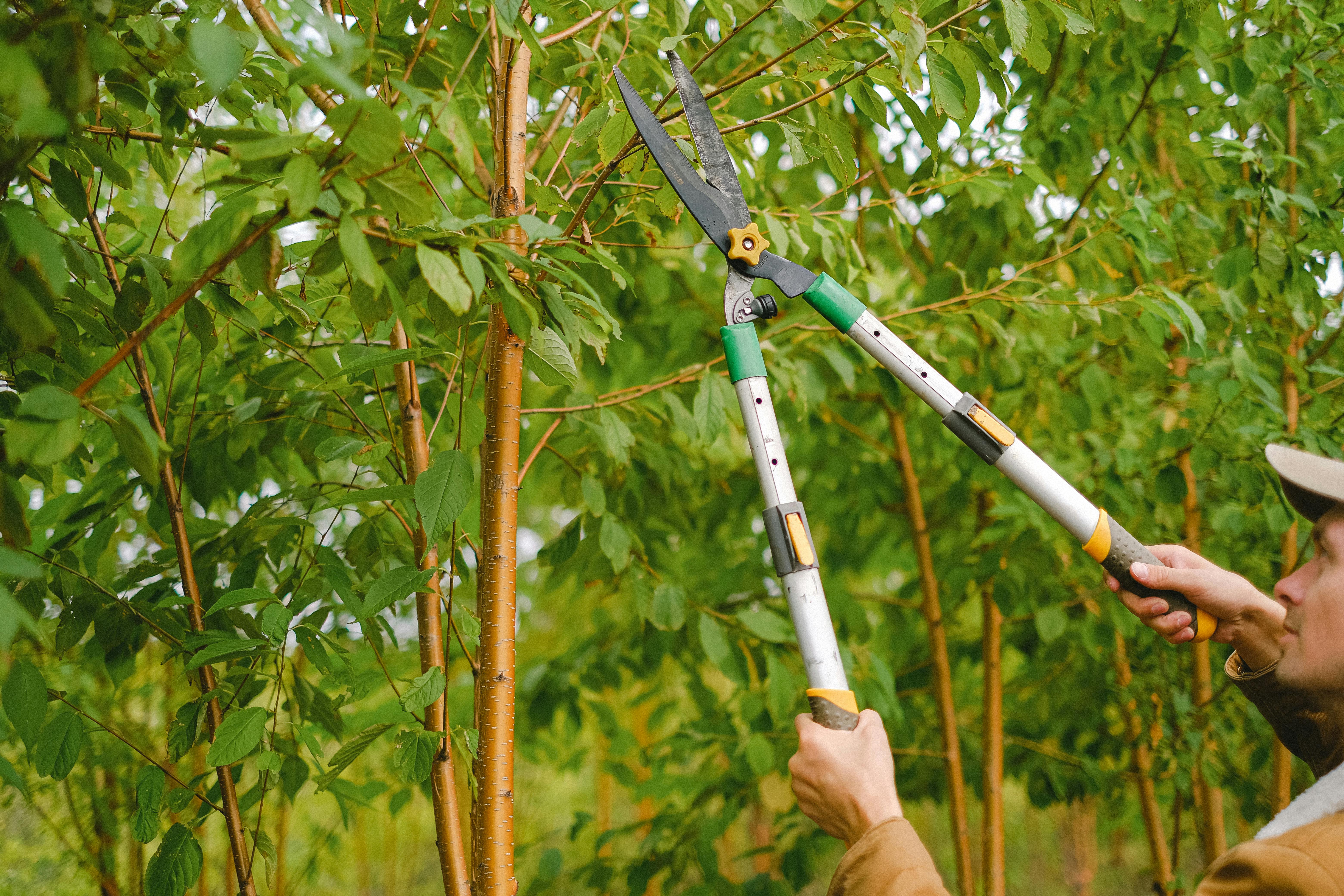Pruning is an important part of caring for a Mandevilla plant. Pruning helps the plant maintain its shape and encourages healthy growth. It also prevents the plant from becoming overgrown and blocking out light and air circulation. With the right tools, pruning a Mandevilla plant can be easy and rewarding. In this guide, we will discuss how to properly prune your Mandevilla plant to ensure it is healthy and vibrant.A Mandevilla is a popular evergreen flowering vine. It is native to many tropical and subtropical regions of the Americas. The plant is known for its attractive, trumpet-shaped flowers that come in shades of pink, red, white, and yellow. The leaves are glossy and oval-shaped with pointed tips. The Mandevilla is a fast-growing climber that can reach heights of up to 10 feet with proper support and care.
When Should You Prune a Mandevilla Plant?
Pruning a Mandevilla plant is an important part of keeping it healthy and looking its best. Knowing when and how to prune your Mandevilla plant can help you get the most out of your investment and keep it looking its best.
The most important time to prune a Mandevilla plant is in the spring, before the growing season starts. This allows for new growth to be encouraged, while also clearing out any dead or damaged branches. It also helps to keep the plant looking neat and tidy as it grows.
Pruning should be done with care, as improper pruning techniques can cause damage to the plant. To ensure proper pruning, use sharp, clean pruning shears and cut back branches at an angle. Make sure not to remove more than one third of the plant’s total growth in one session.
In addition to spring pruning, you may also need to trim your Mandevilla plant during other times of the year if it is growing too large or becoming overgrown. If this is the case, trim back any branches that are obstructing other plants or paths. Also remove any dead branches throughout the year as they appear.
If you notice any signs of disease on your Mandevilla plant, such as yellowing leaves or wilting stems, take immediate action and remove any affected areas. This will help prevent further spread of disease and help keep your Mandevilla healthy for years to come.
Prune a Mandevilla Plant
Pruning a Mandevilla plant is an essential part of its care and maintenance. Pruning keeps the plant healthy and helps it to thrive. The tools needed for pruning a Mandevilla plant are quite simple and include sharp scissors or pruners, gloves, and a potting mix.
Sharp scissors or pruners are essential for trimming back overgrown stems and branches. Pruners make it easy to reach difficult spots, but scissors can still work well when trimming smaller branches. To ensure the best results, use sharp, clean tools that won’t damage the plant while you’re pruning.
Gloves are also important when pruning a Mandevilla plant. The sap from the stems can be irritating to the skin, so it’s best to wear gloves to protect your hands.
Finally, you’ll need potting mix for replanting cuttings or stems that you have trimmed off the Mandevilla plant. Potting mix helps promote root growth in cuttings so they can develop into new plants.
Overall, these three tools are all that is needed to successfully prune a Mandevilla plant – sharp scissors or pruners, gloves, and potting mix. With just these tools, you can keep your Mandevilla healthy and thriving with minimal effort!
Tools Needed
Before starting to prune a Mandevilla plant, it is important to know what tools will be needed. Pruning shears, garden gloves, and a bucket or trash can for collecting yard waste are all necessary for proper pruning. It is also helpful to have a small ladder or step stool on hand if the Mandevilla plant is tall enough to require additional reach.
Pruning Techniques
When pruning a Mandevilla plant, it is important to use the proper techniques. Start by removing any dead or diseased branches from the plant and discard them in the trash can or bucket. Cut back any stems that are growing out of shape or in an undesirable direction. When cutting back stems, make sure that the cuts are clean and even. Avoid leaving any jagged edges as these can lead to infection in the plant.
Fertilizing After Pruning
Once the Mandevilla plant has been pruned, it is important to fertilize it properly to ensure healthy growth. An all-purpose fertilizer should be applied at the base of the plant according to package instructions. Watering regularly and adding mulch around the base of the plant can also help maintain proper moisture levels and keep weeds away.
Caring for Pruned Plant
It is important to remember that a Mandevilla plant should not be over-pruned as this can cause damage to the roots and stunted growth overall. Caring for a pruned Mandevilla requires regular watering and fertilizing as well as occasional trimming throughout the growing season. Keeping an eye out for pests such as aphids or mealybugs can help prevent infestations from occurring.
How to Cut the Mandevilla Plant Stems
Caring for a mandevilla plant requires regular pruning of its stems. Pruning is necessary to maintain the shape of the plant and encourage new growth. To properly cut back your mandevilla plant, you’ll need a pair of sharp gardening shears or scissors. Start by cutting off any diseased, dead, or damaged stems and then move onto healthy stems that have become too long or unruly. When cutting back healthy stems, be sure to make the cut just above a leaf node as this will encourage new growth. After pruning, be sure to dispose of any trimmings away from the plant as they may harbor pests or diseases.
If you’re looking for an even more drastic pruning, you can completely remove some of the stems at ground level. This is usually done when a mandevilla becomes overgrown and needs to be rejuvenated or when it has outgrown its pot and needs to be repotted in a larger container. You can also cut down some of the taller stems in order to create a bushier appearance. Be sure to make your cuts just above a leaf node so that new growth can emerge from there.

Trimming and Shaping the Mandevilla Plant
Mandevilla plants are beautiful ornamental shrubs that are popularly grown in home gardens. They can add a bit of color to any outdoor space and can be trained to climb trellises or arches. Trimming and shaping your Mandevilla plant is an important part of maintaining its growth and keeping it looking its best. Here are some tips for how to trim and shape your Mandevilla plant.
First, it’s important to know when to trim your Mandevilla plant. The best time to trim is in late winter or early spring before new growth begins. This will allow you to shape the plant without disturbing new buds or shoots. When trimming, make sure you’re using clean, sharp pruning shears so that you don’t damage the plant’s stems or leaves.
When shaping your Mandevilla plant, you should focus on removing dead or damaged branches and stems as well as any excess foliage that may be crowding the center of the plant. Be sure to leave some foliage at the ends of the branches so that they can continue to grow properly. You may also want to use a trellis or other support structure for your Mandevilla so that it can climb up and cascade down gracefully.
Finally, after trimming and shaping your Mandevilla plant, make sure you fertilize it with a high-quality fertilizer specifically designed for flowering plants like Mandevillas. This will help ensure that your plant gets all of the nutrients it needs for strong, healthy growth throughout the season.
By following these steps, you can easily keep your Mandevilla looking beautiful all year round!
How to Deadhead the Mandevilla Plant
Deadheading, or the removal of spent or wilted flowers, is a common gardening practice for many plants. Mandevilla plants, in particular, should be deadheaded regularly to keep them looking healthy and encourage new blooms. Deadheading your Mandevilla plant is easy and can be done with a few simple steps.
The first step is to locate any spent blooms on your plant. When the flower fades and begins to look wilted, it is ready for deadheading. Once you have identified the spent blooms, use pruning shears or scissors to cut them off just above a set of leaves. Do not leave any stalk behind; make sure that you cut close to the leaves on the stem so that there will be no stubs left behind.
After you have removed all of the spent blooms from your plant, dispose of them properly. It’s important not to add them back into your garden soil as they may contain disease organisms which could spread and infect other plants nearby.
Once all of the old blooms are removed from your Mandevilla plant, it will begin to produce new ones in no time! Regular deadheading will help keep your Mandevilla looking beautiful and encourage more blooms throughout the season.
Pruning
Pruning is an important part of caring for a Mandevilla plant. It will help encourage healthy growth and flowering. Pruning should be done at least once a year and should not be done too aggressively. It’s best to prune after flowering has finished, usually in late summer or early autumn. When pruning, remove any dead, diseased or damaged stems and any stems that are growing in an unruly manner. Trim back the side shoots of the main stems by up to one-third to encourage bushier growth.
Tools
To get the best results when pruning, it’s important to have the right tools. A pair of sharp garden secateurs or loppers are essential for cutting through thicker branches. For finer pruning work, use a pair of small sharp scissors or shears. Make sure all tools are clean before use; this will help prevent any disease being spread from one plant to another.
Timing
When deciding when to prune your Mandevilla plant it is important to time it correctly. Pruning too late in the season can damage new growth which may not have time to harden off before winter sets in. Conversely, pruning too early can make the plant vulnerable to frost damage as it has less foliage left on it.
Encouraging Flowers
Pruning can also help encourage flowering on your Mandevilla plant. Prune back some of the older woody stems each year and this will encourage new growth which will produce more flowers for you to enjoy.
Aftercare
Once you have finished pruning your Mandevilla plant, give it some aftercare by applying a balanced fertilizer and making sure it gets plenty of water during the growing season. This will help keep your Mandevilla healthy and encourage more beautiful blooms each year!

Conclusion
Mandevilla is a versatile plant that can be grown indoors or outdoors. Pruning is an important part of its care and will help it stay healthy and vigorous. The best time to prune your Mandevilla plant is in late spring or early summer after it has finished flowering. When pruning, always use clean, sharp tools and be sure to remove any dead or diseased branches. Pruning will help encourage new growth and keep your Mandevilla plant looking full and beautiful.
With regular pruning, your Mandevilla plant can look stunning year-round with its vibrant flowers and lush foliage. With proper care and attention, you can enjoy this beautiful flowering vine for years to come.

